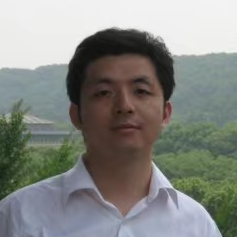Novel Approaches for Remote Sensing Image Processing
A special issue of Applied Sciences (ISSN 2076-3417). This special issue belongs to the section "Earth Sciences".
Deadline for manuscript submissions: closed (30 November 2023) | Viewed by 7032
Special Issue Editors
Interests: remote sensing image processing
Interests: hyperspectral image processing; classification; target detection
Interests: hyperspectral image processing; artificial intelligence and machine learning in remote sensing; geological applications with remote sensing
Special Issues, Collections and Topics in MDPI journals
Special Issue Information
Dear Colleagues,
This Special Issue is focused on hyperspectral image processing, image classification, unmixing, sub-pixel mapping, change detection on multi-remote sensing images, artificial intelligence and machine learning in remote sensing, and the geological applications of remote sensing.
This Special Issue aims to collect original research and review articles related to approaches for remote sensing image processing. Themes of particular interest for this collection include, but are not limited to:
- hyperspectral image processing
- classification
- sub-pixel mapping
- change detection
- artificial neural networks
- geological remote sensing
Prof. Dr. Ke Wu
Dr. Yuxiang Zhang
Prof. Dr. Yi Wang
Guest Editors
Manuscript Submission Information
Manuscripts should be submitted online at www.mdpi.com by registering and logging in to this website. Once you are registered, click here to go to the submission form. Manuscripts can be submitted until the deadline. All submissions that pass pre-check are peer-reviewed. Accepted papers will be published continuously in the journal (as soon as accepted) and will be listed together on the special issue website. Research articles, review articles as well as short communications are invited. For planned papers, a title and short abstract (about 100 words) can be sent to the Editorial Office for announcement on this website.
Submitted manuscripts should not have been published previously, nor be under consideration for publication elsewhere (except conference proceedings papers). All manuscripts are thoroughly refereed through a single-blind peer-review process. A guide for authors and other relevant information for submission of manuscripts is available on the Instructions for Authors page. Applied Sciences is an international peer-reviewed open access semimonthly journal published by MDPI.
Please visit the Instructions for Authors page before submitting a manuscript. The Article Processing Charge (APC) for publication in this open access journal is 2400 CHF (Swiss Francs). Submitted papers should be well formatted and use good English. Authors may use MDPI's English editing service prior to publication or during author revisions.







